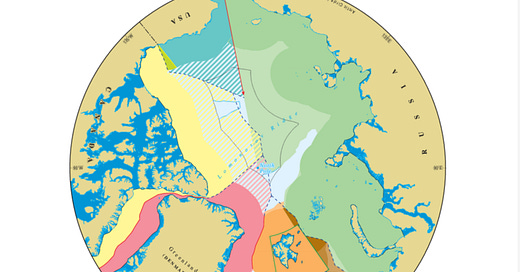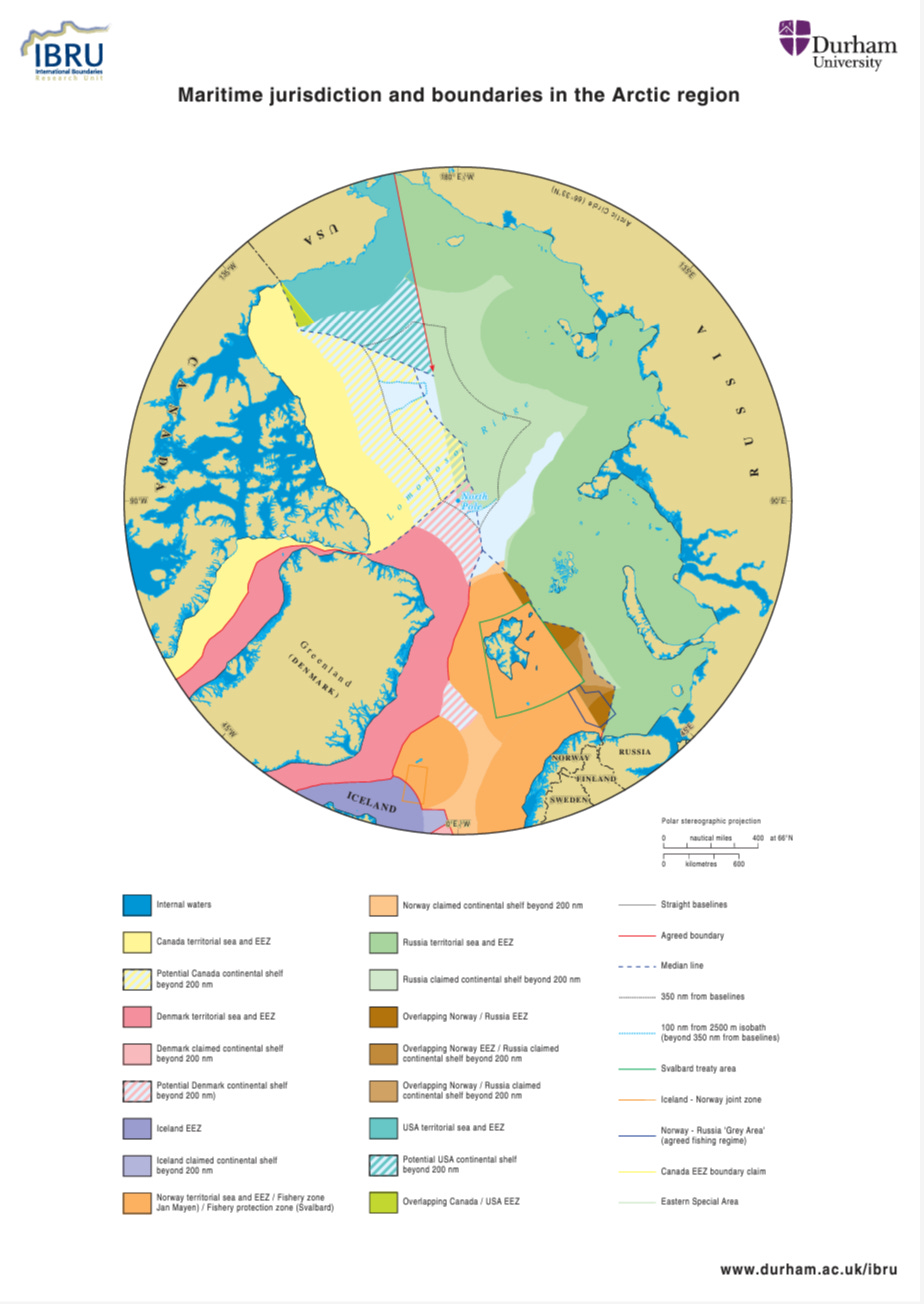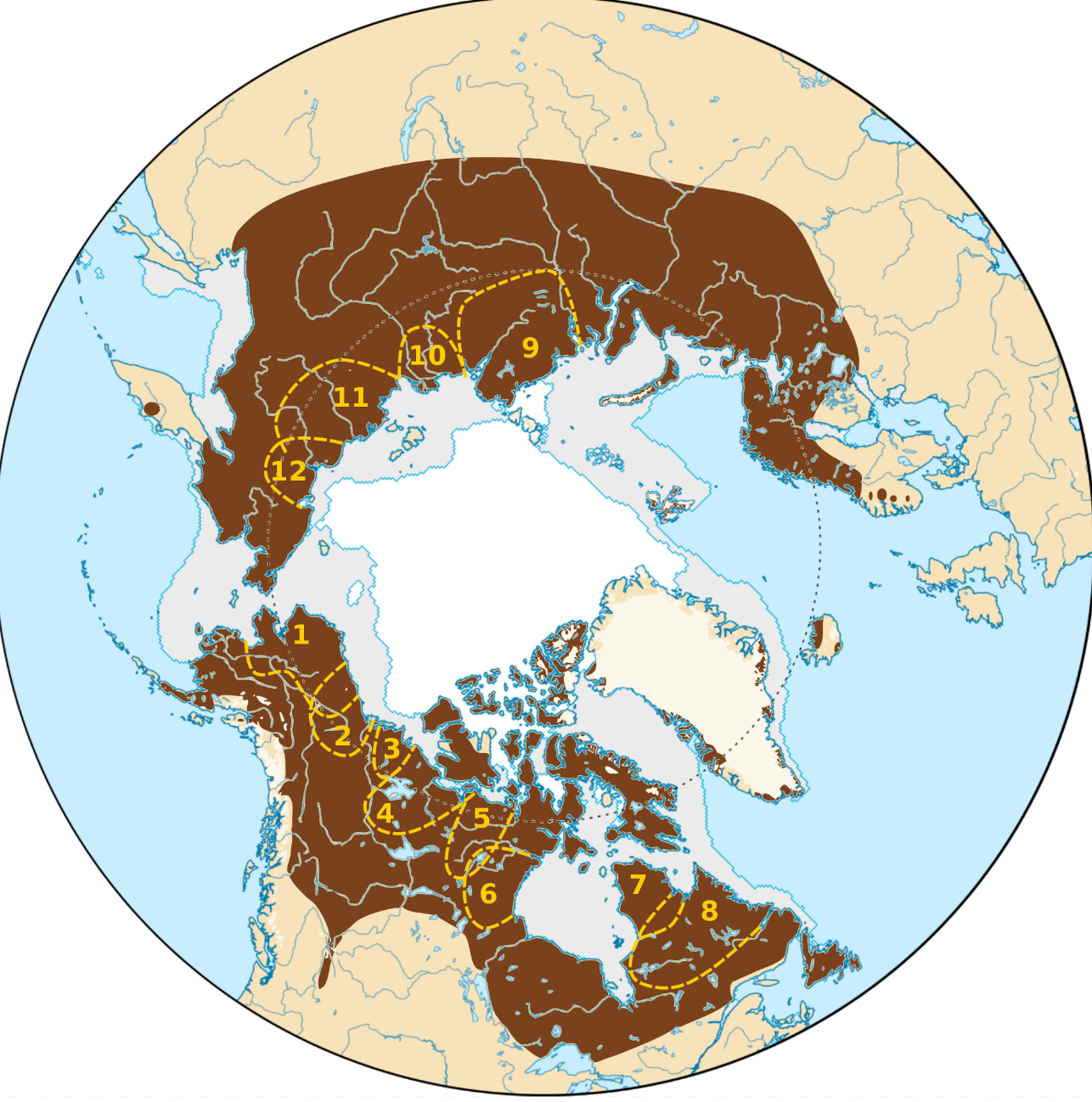The Christmas episode of Ones and Tooze this week took an unflinching look at the economics of Santa’s workshop.
We addressed the truly serious issue of sovereignty over the North Pole.
This map put out by Durham University provides a spy satellites view of the North pole and the competing claims on continental shelf.
Remarkably, in February 2023 the UN Commission on the Limits of the Continental Shelf approved Russia’s claim to the North Pole itself, pending further claims by Denmark (by way of Greenland) and Canada.
Cam then moved us to the fundamental question of the underlying logic of a gift economy like that of Santa Claus. How could such a thing function? I parried this question by reference to Georges Bataille’s analysis of the economics of abundance and specifically the Marshall Plan in his study of political economy, The Accursed Share. From the point of view of a "general economy”, Santa’s global gift economy is not so much a mystery as an essential part of a global system of political economy.
But what of the real economics of Santa’s workshop? Clearly, the crucial input is elvish labour. And in a rather dark turn, Cam pointed out that Elf labour is commonly thought of a form of unfree, “slave” labour. Deeply rooted in myth, this idea recurs most recently in the house-elves that feature in the Harry Potter series. Alarmingly, in a survey of American respondents conducted ten years ago, a solid majority were convinced that Elf labor was slave labour, which is frankly a horrifying vision. And it begs the question, why? What about the fantasy suggests that coercion must be involved? In an effort to counteract this assumption, a rather good piece in the Pacific Standard Magazine digs into the question of whether the North Pole is the sort of geography in which we would expect unfree labout to prevail. It comes to mixed conclusions.
Apart from elves, what Santa needs is propulsion. My personal favorite was the segment on reindeer. At a rough guess there must be something like 1 million Eurasian reindeer and another 3 million plus North American Caribou.
Approximate geographical distribution of reindeer and of the major migratory herds. 1. Western Arctic herd (R.t. granti). 2. Porcupine herd (R.t. granti). 3. Bluenose herd (R.t. groenlandicus). 4. Bathurst herd (R.t. groenlandicus). 5. Beverly herd (R.t. groenlandicus). 6. Qamanirjuaq herd (R.t. groenlandicus). 7. Leaf River herd (R.t. caribou). 8. George River herd (R.t. caribou). 9. Taimyr Peninsula herd (R.t. tarandus). 10. Lena-Olenek herd (R.t. tarandus). 11. Yana-Indigirka herd (R.t. tarandus). 12. Sundrum herd (R.t. tarandus).
Perhaps a 100,000 people around the Arctic circle depend to a significant extent on herding reindeer. Unfortunately, most of the reindeer muscle is not used for pulling toy-laden sleighs. But the real clincher factoid of the episode is that insofar as Santa’s reindeer have antlers, whether they be called Dasher, Dancer, Prancer, Vixen, Comet, Cupid, Dunder and Blixem, they are all girls! To find out why, check out the podcast.
If you would like to sign up to Chartbook click here:
For last minutes xmas shopping, click here
A very merry holiday to. you all.






Whatever the absurdities of the UN cOmmission, it can't overturn the fact that the North Pole postal code is a canadian one and is H0H 0H0.
https://en.wikipedia.org/wiki/Postal_codes_in_Canada#:~:text=The%20postal%20code%20H0H%200H0,the%20similar%20looking%20letter%20O.
It occurred to me that another paradigm through which to understand Elvish labour is along the lines of the monastic orders of Western Medieval Europe -- a labour of worship and devotion.